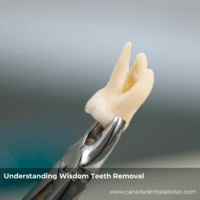The Different Types of Braces
Orthodontic treatment has come a long way from the bulky metal braces of the past. Today, patients have several options, each with unique advantages.
1. Traditional Metal Braces
-
Best for: Complex cases, younger patients
-
How they work: Metal brackets and wires gradually move teeth into place.
-
Why patients choose them: Durable, effective, and often the most affordable.
2. Ceramic Braces
-
Best for: Teens and adults who want a more discreet option
-
How they work: Similar to metal braces but use tooth-colored or clear brackets.
-
Why patients choose them: Less visible than metal braces but still highly effective.
3. Lingual Braces
-
Best for: Adults who want an invisible option
-
How they work: Brackets and wires are attached to the back of the teeth.
-
Why patients choose them: Completely hidden but require more maintenance.
4. Clear Aligners (e.g., Invisalign)
-
Best for: Mild to moderate alignment issues, adults and teens
-
How they work: A series of removable clear trays gradually shift teeth.
-
Why patients choose them: Virtually invisible, removable for eating and cleaning.
Each type of braces has pros and cons, but what truly determines success is how well the treatment is tailored to the patient’s unique needs.
Why Individualized Care Plans Matter
No two smiles are the same, so why should treatment be identical? A personalized orthodontic plan ensures the best results by considering:
-
Age and Growth Patterns: A growing child may need different interventions than an adult.
-
Lifestyle and Habits: Athletes, musicians, or frequent travelers need braces that fit their daily life.
-
Oral Health Conditions: Patients with gum issues or enamel problems need extra care.
-
Aesthetic Preferences: Some prioritize invisibility, while others prioritize durability.
By matching the right type of braces with the patient’s needs, orthodontists can improve treatment outcomes and reduce complications.
Enhancing Patient Compliance Through Personalization
Let’s be honest—braces require effort. From avoiding sticky foods to keeping up with hygiene, it’s easy to lose motivation. But when patients feel their treatment fits their life, compliance improves naturally.
For example:
-
Emily’s Story: She’s an athlete who often forgets to wear removable aligners. Her orthodontist recommended metal braces that stay on 24/7, ensuring consistent progress.
-
Ryan’s Story: He felt self-conscious about visible braces, so his orthodontist suggested ceramic braces, boosting his confidence and willingness to stick to the plan.
When patients feel comfortable with their treatment, they’re more likely to follow instructions, attend appointments, and keep up with oral hygiene—leading to faster, more predictable results.
Long-Term Oral Health Benefits
The goal of orthodontics isn’t just straight teeth; it’s a healthier mouth for life. Properly aligned teeth are easier to clean, reducing the risk of:
-
Tooth decay
-
Gum disease
-
Abnormal wear on enamel
-
Jaw pain or TMJ disorders
Individualized care ensures the chosen braces won’t just fix cosmetic issues but also address bite problems, improve oral function, and protect long-term dental health.
How to Choose the Right Braces for You
Selecting the right braces is a collaborative process. Here’s how to get started:
-
Consult a Qualified Orthodontist – They’ll assess your oral health and recommend options.
-
Discuss Lifestyle Needs – Be honest about your habits, work, or school life.
-
Consider Budget and Maintenance – Some braces require more upkeep or cost more.
-
Ask About Expected Treatment Time – Different braces may vary in how long they take.
-
Think About Your Confidence Level – If appearance matters, prioritize more discreet options.
A personalized plan means you’re more likely to love the process—and the result.
Conclusion
Understanding the different types of braces is just the beginning. The real secret to successful orthodontic treatment lies in personalized care plans that consider your unique needs, lifestyle, and goals. By choosing the right approach, you can improve treatment outcomes, stay motivated, and enjoy a healthier smile for years to come.
So whether you’re considering braces for yourself or a loved one, remember—there’s no one-size-fits-all solution. The best smile starts with a plan designed just for you.
FAQs
1. How long does orthodontic treatment usually take?
Most treatments last 12–24 months, but it depends on the complexity of your case and how well you follow your orthodontist’s instructions.
2. Are clear aligners as effective as braces?
For mild to moderate issues, yes! But for complex cases, traditional braces may be more effective.
3. Will braces hurt?
You may feel mild discomfort after adjustments, but it usually goes away in a few days.
4. Are ceramic braces more expensive than metal braces?
Yes, they tend to cost more because they use more aesthetic materials.
5. Can adults get braces?
Absolutely! Orthodontic treatment works at any age, though it may take a bit longer for adults.
6. How often will I need to visit the orthodontist?
Typically every 4–8 weeks for adjustments or new aligners.
7. Will braces affect speech?
Some types, like lingual braces, may temporarily affect speech, but most patients adjust quickly.
8. Can I play sports with braces?
Yes, but wearing a mouthguard is strongly recommended to protect your teeth and braces.
9. What happens if I don’t follow my orthodontist’s instructions?
Treatment may take longer, and you might not get the best results.
10. How do I maintain oral hygiene with braces?
Brush after every meal, floss carefully, and consider using an orthodontic toothbrush or water flosser.











Leave a Reply